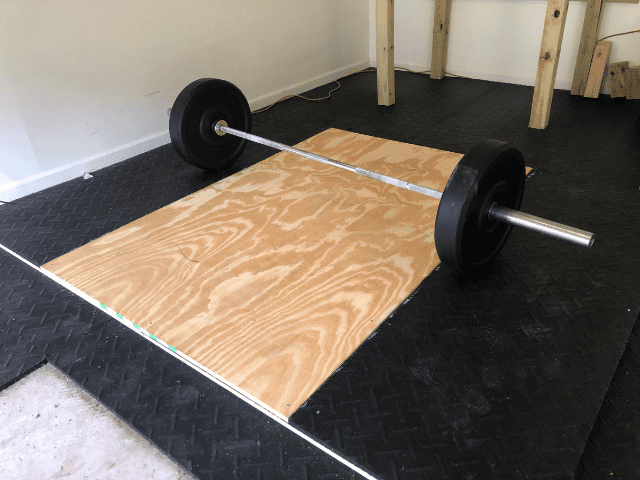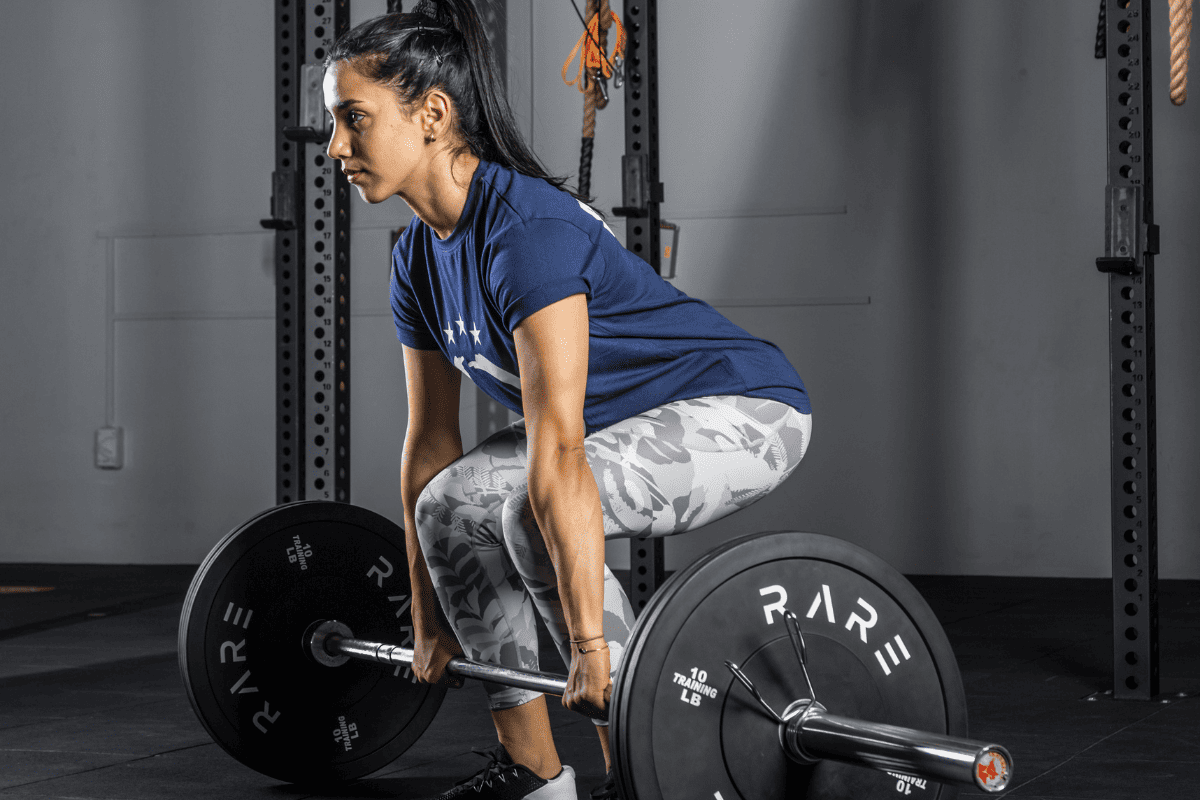Why Do Olympic Barbells Spin?
One of the most distinctive features of an Olympic barbell, which differentiates it from other types of barbells, is its spinning sleeves. These sleeves are the ends of the barbell where the weight plates are loaded, and they can rotate, or spin, independently of the main shaft of the barbell.
The spinning feature of an Olympic barbell is not merely for aesthetics or a trivial component but a crucial aspect of its design.
The spin helps distribute the momentum of the weights evenly, which reduces the torque or rotational force placed on the athlete’s wrists, elbows, and shoulders.
This mitigates the risk of injury and allows the athlete to focus on lifting the weight rather than struggling to control the bar’s movement. It also allows for smoother execution of the lifts and helps athletes achieve better performance in both training and competition.
Thus, understanding why (and how) an Olympic barbell spins is fundamental to appreciating its unique design and some of the science behind competitive weightlifting.
The Mechanics of Olympic Barbells

Structure
The structure of an Olympic barbell can be divided into three primary components: the shaft, the sleeves, and the bearings or bushings.
The shaft is the central part of the barbell, where athletes grip during lifts. On either end of the shaft, there are thicker portions called the sleeves, onto which weight plates are loaded.
The barbell is usually made from high-quality steel to withstand high levels of stress and heavy weights.
The shaft features knurling, a pattern of diagonal grooves cut into the metal to provide a firm grip. This knurling is standardized across all Olympic barbells, with one set of rings marking the area where athletes should place their hands for specific lifts.
Barbell Components That Enable Spinning
What allows the sleeves of an Olympic barbell to spin are the bearings or bushings placed between the shaft and the sleeves.
Bearings are cylindrical or spherical objects that reduce friction and allow smooth rotation. They’re often made of durable materials like steel or bronze.
In contrast, bushings are simple rings of material placed in the same position and perform a similar function, though generally, they don’t provide as smooth a spin as bearings.
High-end Olympic barbells typically use needle bearings, which are more precise and offer smoother and faster rotation. They are especially useful for the fast, explosive lifts found in Olympic weightlifting, such as the snatch and the clean and jerk that involve the barbell quickly rotating during the lift.
On the other hand, powerlifting bars or those designed for slower, heavier lifts like the squat, bench press, and deadlift, may use bushings as rotational spin is less crucial (and sometimes even undesirable).
The Role of the Spin in Weight Distribution and Balance

The spinning feature of an Olympic barbell plays a vital role in weight distribution and balance during weightlifting exercises. When an athlete performs a lift, the weights on either end of the barbell tend to generate a rotational force due to the barbell spinning as it moves through the air.
Without the ability to spin, the barbell would transfer this rotational force directly to the athlete’s hands and wrists, which would be uncomfortable and could even lead to injury.
However, because the sleeves of an Olympic barbell can spin independently of the shaft, they can rotate to accommodate this rotational force while the shaft remains stable in the athlete’s hands. This allows the weights to spin and settle naturally as the lifter pulls, cleans, or jerks the barbell, reducing the risk of injury and ensuring a balanced, controlled lift.
Furthermore, the spin also assists in maintaining balance during the lift. As the athlete transitions from one position to another, the spin allows the weights to adjust accordingly without disrupting the athlete’s grip or position. This makes for a safer, more efficient lifting experience.
The Evolution of the Spinning Olympic Barbells
History of the Olympic Barbell and Introduction of the Spin Feature
The history of weightlifting can be traced back to ancient civilizations, but the equipment they used was far different from today’s Olympic barbells. Early weightlifting tools were often simple, solid bars with fixed weights.
The modern design of the Olympic barbell, complete with its spinning feature, was not introduced until much later.
The innovation of adding spin to a barbell is believed to have originated in the early 20th century, around the time weightlifting was becoming a standardized sport.
As the lifts performed in competitions became more dynamic and complex, athletes needed equipment that could keep up with these demands. To address this, manufacturers began experimenting with barbells that had rotating ends.
The spinning feature was introduced to help athletes perform lifts more safely and efficiently. With the ability of the sleeves to spin independently of the bar, athletes could execute lifts without worrying about the torque generated by the weights, reducing the risk of injuries.
How Spin Technology in Barbells Has Evolve
Since the introduction of the spin feature, the technology behind it has significantly evolved.
Early designs used simple bushings to allow the barbell’s ends to rotate. While these did provide some spin, they often lacked the smoothness and speed that athletes required for optimal performance in dynamic lifts.
As a result, manufacturers began exploring more advanced technologies, leading to the development of barbells with ball or needle bearings. These provided a much smoother and faster spin, greatly enhancing the performance of the barbell during lifts like the snatch and clean and jerk.
Further advancements have led to improvements in the materials used in barbells, with high-quality steel and other durable materials increasing the longevity and reliability of the spinning feature.
Additionally, manufacturers now carefully calibrate the spin of their barbells to ensure they provide the optimal balance of speed and control for athletes.
The best of doing this? In my opinion, it’s Uesaka.
Influence of Spinning Barbells on Weightlifting Competitions and Athlete Performances
The evolution of the spinning Olympic barbell has had a profound impact on weightlifting competitions and athlete performances.
With the introduction and advancement of the spin feature, athletes have been able to perform more complex lifts with heavier weights, pushing the boundaries of human strength and athletic performance.
The smooth and fast spin of modern Olympic barbells has made it possible for athletes to execute lifts like the snatch and clean and jerk with greater efficiency and precision. This has led to a steady increase in the weights lifted in competitions over the years, with world records consistently being broken.
Even more importantly, the improved safety provided by the spin feature has helped reduce the risk of injuries in weightlifting, enabling athletes to have longer and more successful careers.
Final Thoughts
Throughout this article, we’ve explored the mechanics and the significance of the spin in Olympic barbells. This feature is integral for safe and effective weightlifting, allowing the barbell to accommodate the rotational forces generated by the moving weights.
This reduces the stress on the athlete’s wrists, elbows, and shoulders, drastically decreasing the likelihood of injury. It also makes the movements smoother and more balanced, leading to more efficient lifts.
The spin also plays a critical role in enhancing athletic performance by making Olympic movements more accessible to athletes. It allows a smoother transition between different lifting phases, such as in the snatch or clean and jerk, spin contributes to more efficient and successful lifts.
The Future of Spinning Technology in Olympic Barbells
Looking forward, spinning technology in Olympic barbells is likely to continue to evolve, further enhancing athlete performance and safety. We can anticipate advancements in materials used for bearings and bushings, providing even smoother and more precise spin.
Additionally, technological innovations may lead to the development of mechanisms that allow the spin speed to be adjusted based on an athlete’s specific needs or the type of lift being performed.
Finally, understanding the mechanics of the equipment we use in sports is crucial for optimizing performance and safety.
The spinning Olympic barbell serves as a perfect example of how a seemingly simple feature can have a profound impact on a sport.

